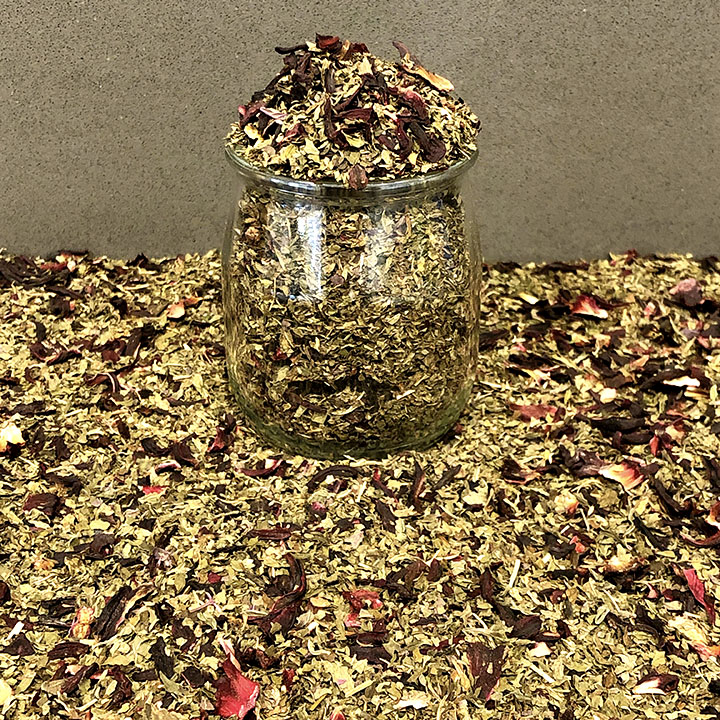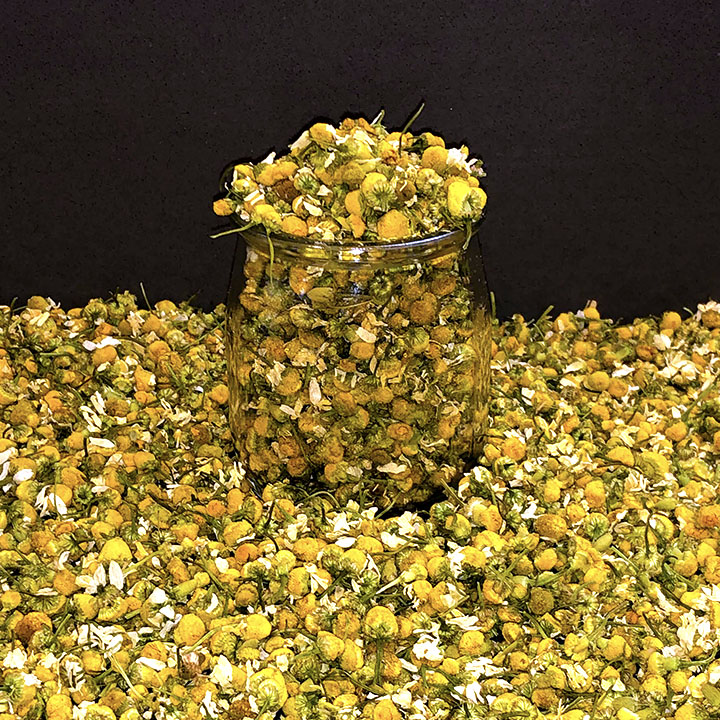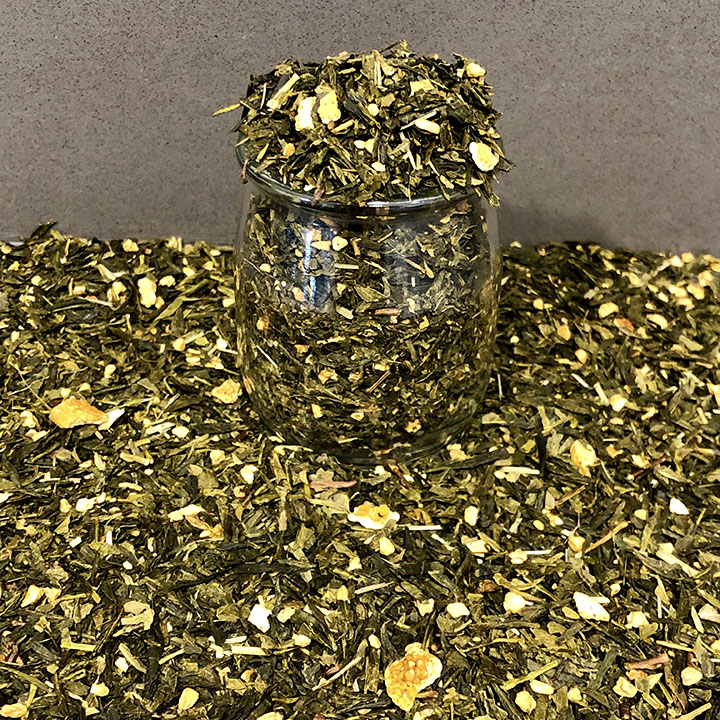Herbal Tea
Whereas most tea comes from the Camellia sinensis plant, herbal tea, or tisane, comes from the infusion of various spices, herbs, fruits, leaves, and other plant material. Unlike traditional tea, these concoctions often do not contain caffeine. They are, however, just as beneficial, and their usage dates back thousands of years. Find out more about the “other” kind of tea.
Nectar Leaf Tea Preparation
Learning How To Prepare
Herbal Tea
Step 1: As a rule for teas, generally you want to use 2 to 3 grams of tea leaves per 8 ounces of water. Ensure that you use pure, fresh water preferably filtered (Avoid distilled water). Bring water to rolling boil.
Step 2: Herbal teas are typically brewed just under boiling. Allow for your boiled water to sit for 30 seconds before pouring. Cover your cup or pot and allow it to steep for 5 to 8 minutes to reach the desired strength of your herbal tea.
Step 3: With loose-leaf tea, pour the water from your teapot through a mesh strainer into your teacup, or simply remove your teabag from the cup. You can add sugar or honey to your tea at this point while it is still hot. Enjoy!
Tip: Steep times will vary greatly with herbal teas depending upon what herb(s) you choose and its thickness. For natural tea leaves and flowers, they may be steeped up to 10 minutes. If you use thicker herbs like barks or berries, you may need up to 20 minutes to steep. Roots can use up to 30 minutes and can often be simmered on the stove in a saucepan over a very low flame.

The History Of Herbal Tea
The history of tisane tea in Ancient Egypt dates as far back as 1,000 BC. Back then, a popular additive was peppermint, which was actually found within the ancient pyramids! In China, legends and tales of tea consumption go all the way back to nearly 2750 BC. A drink old as human history itself, the cultural significance, consumption, and health benefits of tisane tea have truly stood the test of time.
It should be noted that tisane tea is not actually a “true tea.” Instead you can consider it as a herbal infusion. The term ‘tisane’ additionally encompasses that of a herbal and fruit tea. They offer that greatest variety and flavor than any other tea due to their endless amount of combinations. Below you can see some popular Tisane tea and their different intended effects.
What Sets Herbal Tea Apart
Unlike most other teas, herbal teas are generally caffeine-free. This makes it a great choice for people who are sensitive to caffeine or may prefer to drink tea later in the evening. This can greatly help avoid having late night jitters and a restless sleep.
Herbal teas are known for being some of the healthiest drinks. The benefits of herbal teas are extensive and varies based on which herbs are selected for your brew. The vitamins, minerals, and antioxidants found in the countless herbs used in herbal teas have been shown to provide many short and long-term health benefits. Researching the individual herbs to discover which benefits (and flavors) you are seeking, whether it be to help alleviate joint pain or aid in sleeping, can help you find the right herbal blend for you.
Herbal teas have become so popular around the world because it allows people to benefit from the positive health aspects of various herbs, spices and plants in the form of a tasty drink. Some of the most notable health effects from herbal teas include:
- Elder tree herb has been shown to be a great way to combat a cold by clearing the nasal passages and assisting with heavy coughs.
- Elderberry, echinacea, ginger, and liquorice root teas have been shown to fight infections and disease by boosting the immune system.
- Dandelion, chamomile, cinnamon, peppermint, and ginger tea are shown to reduce symptoms of indigestion, bloating, and vomiting. Ginger is also shown to help relieve inflammation, due to its main component, gingerol.
- Chamomile tea is one of the common referenced herbal teas when it comes to stress relief. The effects are often referred to as a mild anti-depressant and can also help aid in sleep.
- Hibiscus has been shown to help lower blood pressure.
- Rooibos and chamomile tea are referenced in skincare routines around the world for their antioxidants and antibacterial properties.
Our Herbal Tea Varieties
Hibiscus Mint Herbal Tea
This antioxidant fueled tea is both fruity and refreshing in taste. Made from the calyces of the Hibiscus flower, our ruby red hibiscus combines the fruity tart of cranberries with an invingoragting mint aftertaste.
Classic European Chamomile
Chamomile is an ancient medicinal herb that now enjoys wide usage, especially in Europe and the United States, as a refreshing tea.As a popular remedy in the past for inflammation, nausea, and numerous other medical issues, it may be thought of as the European counterpart to the Chinese tonic Ginseng.
Lemon Ginger Green Tea
You know the saying, opposites attract. Send your taste buds on a trip when the spicy sensation of ginger pairs with the zesty, refreshing taste of lemon. A drink perfect for any time of the day.
Popular Types of Herbal Tea
Hibiscus Tea: Hibiscus tea has a tart flavor similar to that of cranberries and is rich in powerful antioxidants. It may help lower blood pressure and fat levels while helping prevent damage and disease caused by the buildup of free radicals.
Dandelion Tea: For centuries, dandelions have been used as part of the treatment of numerous ailments. Not only are dandelions packed with vitamins and minerals, the also contain potent antioxidants. Many people find it is also helpful in lowering blood sugar and blood pressure while reducing cholesterol.
Chamomile Tea: Chamomile, also referred to as Babune ka Phal in Hindi, is an ancient herb consumed with over one million cups per day. The dried flowers of chamomile contains chemicals called flavonoids. These flavonoids are a type of nutrient present in many plants, and they play a significant role in chamomile’s medicinal effects. Chamomile preparations are commonly used for treatments concerning ailments such as hay fever, inflammation, muscle spasms, menstrual disorders, insomnia, ulcers, wounds, gastrointestinal disorders, rheumatic pain, and hemorrhoids.
Peppermint Tea: Native to Europe and Asia, peppermint is an aromatic hybrid herb that is a cross between watermint and spearmint. While its known for its minty fresh, pleasant smell and taste, its range of vitamins, minerals, and antioxidants make it a winning combo for tea.
Ginger Tea: Ginger belongs to the Zingiberaceae family and is a plant the holds its roots in Southeast Asia. With a long history of use as a traditional remedy, ginger has held the title as one of the most health forward (and delicious) spices for good reason. Gingerol is the main bioactive compound in ginger and is responsible for much of its medicinal properties. Ginger tea is a go-to for many parents for a child’s stomach ache and to help ease digestive issues such as nausea and vomiting. However, ginger does have a few other tricks up its sleeve. It has also been studied as an anti-inflammatory, aiding in weight loss, and helping ease the tension and pain of headaches and migraines.
Echinacea Tea: Echinacea, also called purple coneflower or black-eyed Susan, comes from the daisy family and offers a sweet yet heavy floral note. Research has shown that it helps increase the number of white blood cells, boosting the immune system. It has also been connected to helping reduce inflammation and lower blood sugar levels.
Rooibos:
Rooibos tea, also known as red tea or red bush tea, is a traditional South African brew. Generally grown on the western coast of South Africa, it is made using leaves from a shrub called Aspalathus linearis. While Rooibos tea has a negligible source of vitamins or minerals, it does have a rich antioxidant content as well. It is also a great source of some unique polyphenols, including aspalathin. These protective plant compounds have been shown to help protect your body against damage that can lead to conditions like diabetes and heart disease.
Kava Tea: Kava is made from Piper methysticum, a plant native to the western Pacific islands. It is most commonly used for anxiety as it has a signature relaxation effect. Some people also take kava for stress, restlessness, and sleeping problems (insomnia).
Tea Caffeine Content
| 8 oz Beverage | Caffeine Content |
|---|---|
| Herbal & Rooibos Teas | 0mg Caffeine Content |
| Decaf | 5-10mg Caffeine Content |
| White Teas | 10-15mg Caffeine Content |
| Green Teas | 15-30mg Caffeine Content |
| Oolong Teas | 30-45mg Caffeine Content |
| Black Teas | 40-80mg Caffeine Content |
| Matcha Tea | 50-80mg Caffeine Content |
| Yerba Mate | 40-85mg Caffeine Content |
| Coffee | 85-200mg Caffeine Content |
Tip: There is significantly less caffeine in the average cup of tea when compared to coffee. The amount of caffeine you will find in tea depends on a number of factors, including the technique and how long you choose to steep it. The greatest impact on caffeine content is the temperature of the water and length of steeping time. Black, Oolong, Green and White tea leaves themselves have very similar caffeine content.
Discover More Nectar Leaf Teas
See all of our Nectar Leaf loose leaf tea varieties as well as our exclusive pairings with kratom strains.


